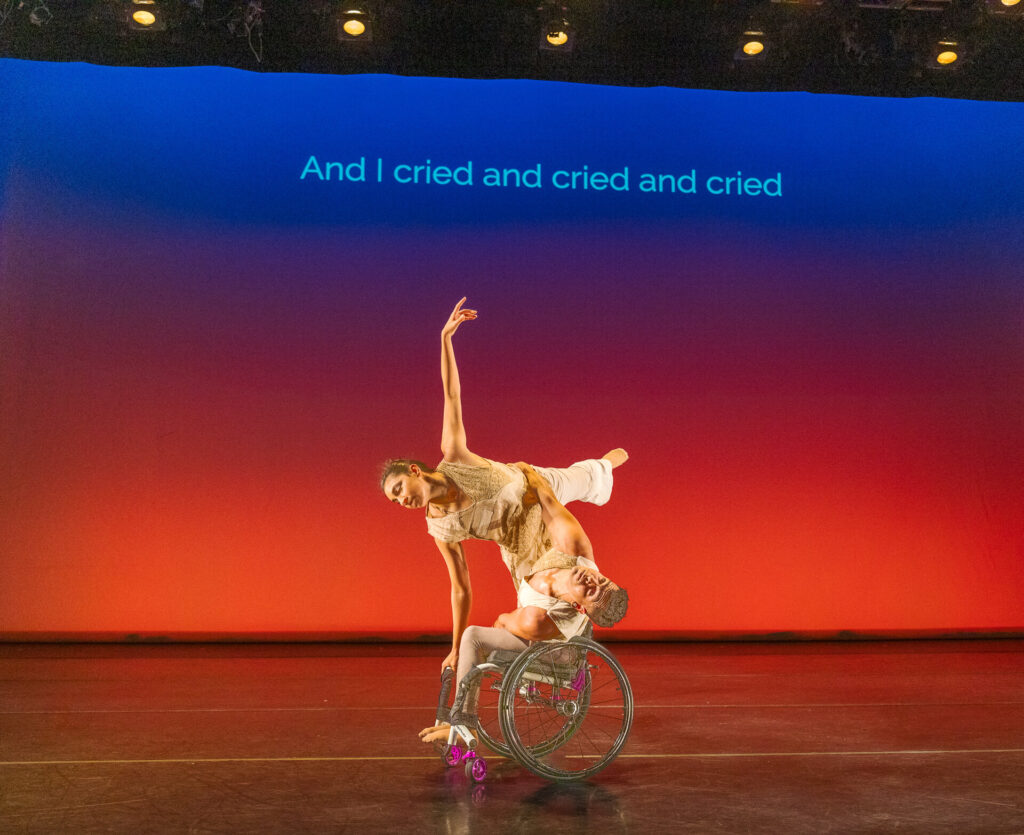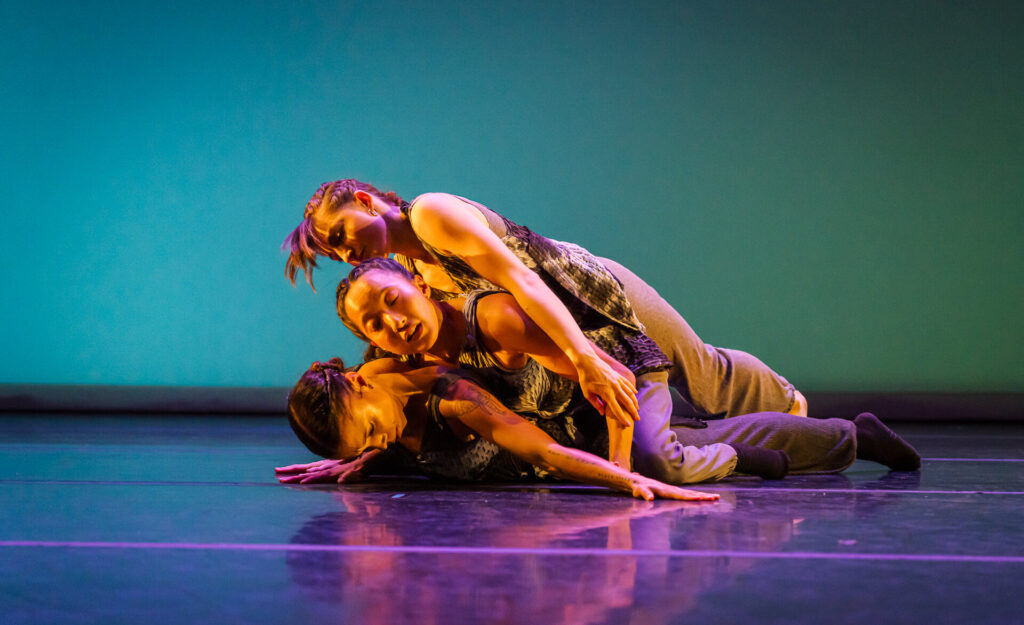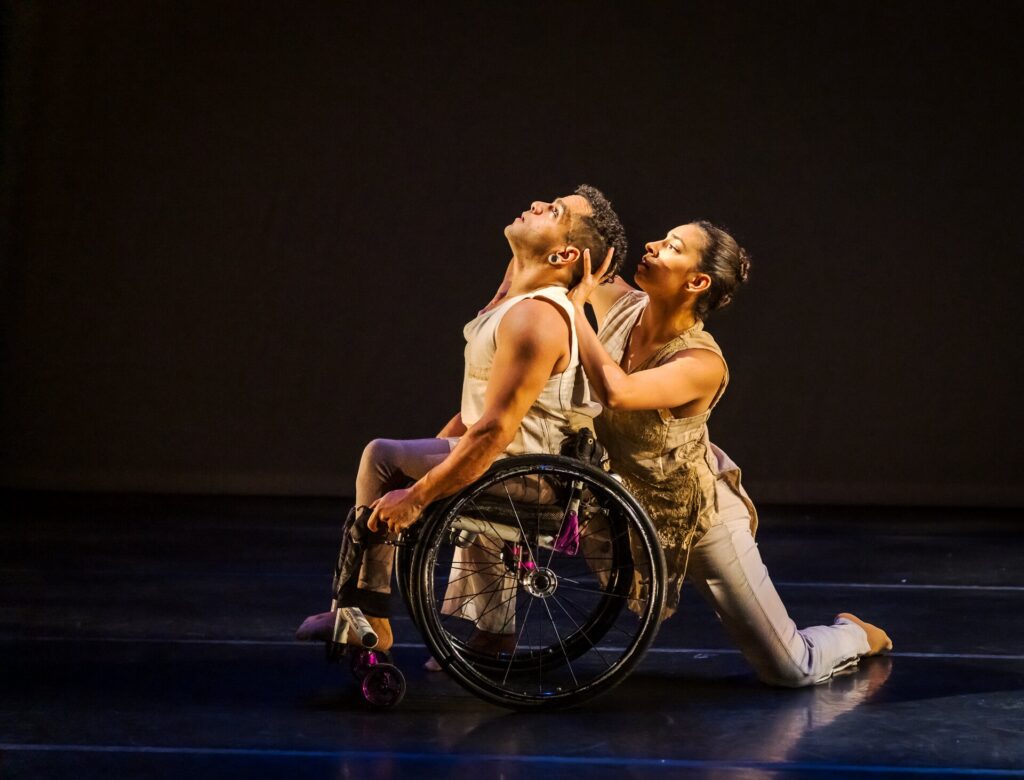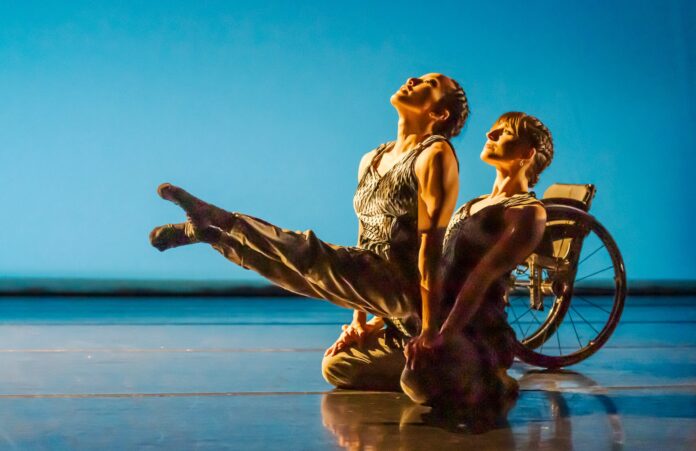One thing I’ve learned anything over 4½ years of attending live events during an ongoing pandemic (and believe me, I’ve learned a lot) is how people with disabilities feel more invisible than ever. Pre-pandemic, it was already a crap shoot as to which venue would be truly accommodating to their disability status, which factored into their ability to enjoy a show or not.
When the 2020 lockdowns occurred, the rise of the “Zoom play” promised a post-pandemic future incorporating livestreaming and tech options to widen a theatre’s audience—not unlike the way the 1918 Influenza lead to innovations in indoor ventilation. Instead, theatres (and nearly all businesses and public spaces) have spent the past two-or-so years pulling back protections as they publicly wonder why their audiences have dwindled. Disabled and immunocompromised patrons were already a rare presence onstage, now they feel even more shut out from live events, so long as the COVID pandemic proliferates (which it is).
That’s why it was such a relief for me—that guy who reports about COVID safety in every review—to be invited to a show that not only featured the work of people with disabilities, but required masks for all audience members. The show in question was Ecos—it ran from October 11–13 at ODC, SF— a showcase of three world premieres by the dance troupe AXIS Dance Company, comprised of people with disabilities. If anyone wonders where you could find the intersection between disability representation, COVID safety, and an entertaining theatrical experience, this show was a fine example.

Even before the show began, there were a noticeable number of attendees partaking of the wheelchair spaces in the front row and activating the descriptive audio devices handed out by AXIS members. After an intro by AXIS’ crutch-sporting AD Nadia Adame, who described herself for the visually impaired, the show began with Piel de Luna, which Adame choreographed. It was a fluid piece set to an ethereal jazz score by Kev Choice. It featured four dancers, one of whom is in a wheelchair, moving around a cone-shaped white obelisk filled with Swiss-cheese-style holes. When the obelisk rises to the roof and is lit from within, it becomes the moon of the title.
Not only is the choreo lovely to watch, but the description of the movements (projected as captions on the upstage wall) is turned into spoken-word poetry done in-sync with both the dancers and the music. I do wonder if the audio device descriptions were more detailed, but even this poetic integration weaved it in naturally.
The second piece, Harmony of Souls (choreographed by dazaun soleyn), is a rather haunting R&B-infused dance duet (one dancer in a wheelchair) that seems to track the course of a rocky, perhaps toxic, relationship. soleyn’s choreo speaks to the need of trying to capture the tumultuous ups-and-downs of romantic couplings, as well as the proverbial and literal effects it can leave on the body. This interpretation is only strengthened by the use of a proper song (both it and the musical changes are captioned upstage) that speaks to an unreachable longing. Watching the dancers depart in the end is akin to watching a once-happy couple walk off separately into the sunset.

After the intermission, we had the final piece, in which AXIS collaborated with Post:ballet. Choreographed by Jorge Crecis, Blueprints of being has the most crowded set of the entire show, with dancers from both companies and clothes racks on the far ends to give the impression of being backstage at a theatre. A very long vocal intro gave us both the usual curtain speech disclaimers (phones, etc.) before going into a self-acknowledged rant about dance.
“This is a tribute to dancers by a choreographer,” we were told. Indeed, the piece features the dancers seeming to act out a series of theatre games (like walking the grid), in-between choreo that found them slipping in-and-out of the hanging costumes. Several of the dancers gave biographical soliloquys of how they got into dancing (one wanted to be an army pilot, one began making stride before the pandemic started, and so on) and the all-too-relatable frantic nature of trying to make a living in the arts—especially in San Francisco. At one point, two dancers recited a mocking back-and-forth monologue that seemed to manifest the Impostor Syndrome every artist knows well.
Help us save local journalism!
Every tax-deductible donation helps us grow to cover the issues that mean the most to our community. Become a 48 Hills Hero and support the only daily progressive news source in the Bay Area.
Yet, there’s a genuine love for dance that came through. In fact, ending with one of the improvisational games almost serves as a reminder that despite all the panic and pressure, there is fun to be had pursuing one’s passion.

Naturally, one would be remiss not to mention the abundance of masks in this show where they were required. Maybe one or two people entered the theatre proper without them, but even they put them on when they sat down. The only person not wear a familiar respirator was a person in the back who seemed to be breathing through a mechanical one, the mouthpiece of which they held to their face. Over the two-act, 90-plus-minute show, my Aranet4’s CO² readings peaked around 1,202ppm during the final bow.
Ecos was not only an enlightening showcase of dancers of various mobility levels, it was also a well-choreographed piece of theatre in its own right. The only question I have regarding its accessibility is whether a streaming option was offered? With technology opening so many doors to theatrical accessibility (especially over the last 4½ years), one would hope that the option to watch from home would be made available to those who can’t get out as often. In any case, Ecos was exemplary as to how theaters don’t need to compromise on safety or representation in order to put on a great show.




